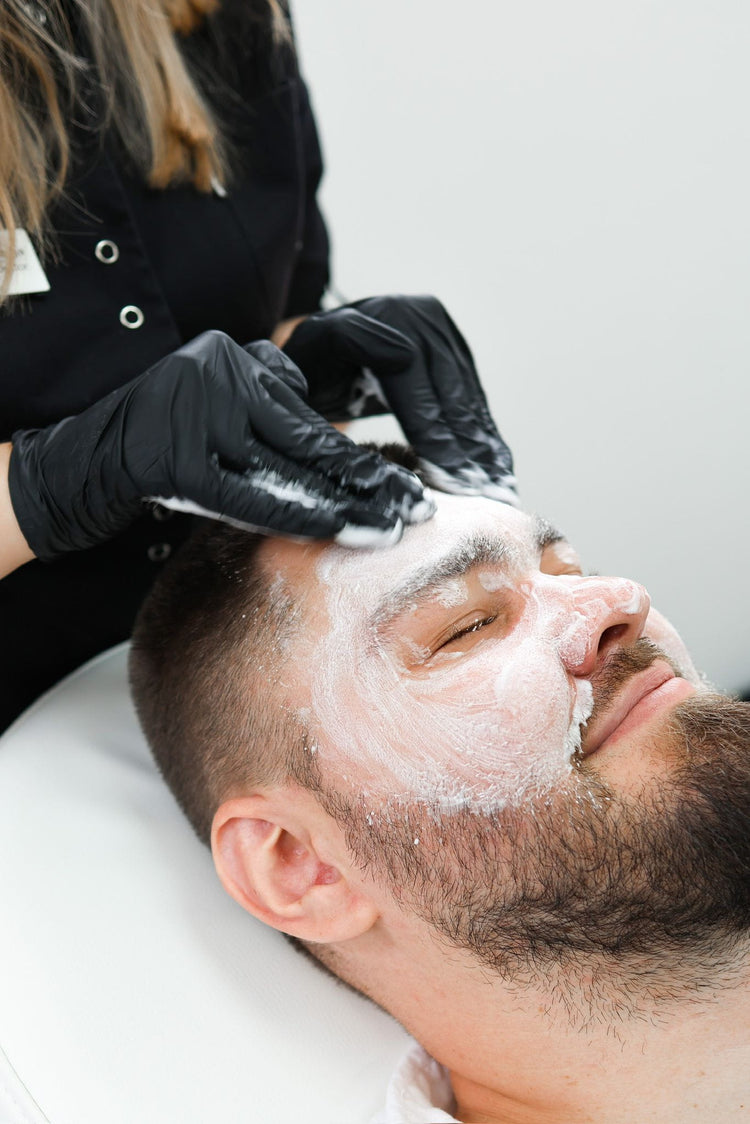Relationship Burnout When Love Feels Like a Full-Time Job
Relationship Burnout: When Love Feels Like A Full-Time Job

Symptoms of Relationship Burnout
Relationship burnout occurs when the constant demands and stresses of a partnership lead to emotional exhaustion, detachment, and a loss of joy in the connection. Recognizing these symptoms early on can help couples address the underlying issues and prevent further strain on their relationship.
Exhaustion and Fatigue
Relationship burnout is a serious issue that can significantly impact the health and happiness of a couple. It occurs when the emotional demands of a relationship become overwhelming, leading to feelings of exhaustion, detachment, and a loss of enjoyment in the partnership. Recognizing the warning signs early on is crucial for couples who want to prevent further damage and work towards a healthier connection.
- Feeling emotionally drained: A constant feeling of exhaustion and depletion from the emotional demands of the relationship.
- Increased irritability and negativity: Finding it difficult to maintain a positive attitude and experiencing frequent outbursts of anger or frustration.
- Withdrawal and detachment: Becoming emotionally distant from your partner, showing less interest in spending time together, or avoiding conversations.
- Loss of joy: Feeling like the relationship has lost its spark and you no longer derive happiness or fulfillment from it.
- Feeling resentful: Building up feelings of bitterness and resentment towards your partner for their perceived shortcomings or burdens they place on you.
Emotional Detachment
Relationship burnout is a serious issue that can significantly impact the health and happiness of a couple. It occurs when the emotional demands of a relationship become overwhelming, leading to feelings of exhaustion, detachment, and a loss of enjoyment in the partnership. Recognizing the warning signs early on is crucial for couples who want to prevent further damage and work towards a healthier connection.
- Feeling emotionally drained: A constant feeling of exhaustion and depletion from the emotional demands of the relationship.
- Increased irritability and negativity: Finding it difficult to maintain a positive attitude and experiencing frequent outbursts of anger or frustration.
- Withdrawal and detachment: Becoming emotionally distant from your partner, showing less interest in spending time together, or avoiding conversations.
- Loss of joy: Feeling like the relationship has lost its spark and you no longer derive happiness or fulfillment from it.
- Feeling resentful: Building up feelings of bitterness and resentment towards your partner for their perceived shortcomings or burdens they place on you.
Lack of Interest in Intimacy
Relationship burnout can manifest in various ways, often subtly at first. One common symptom is a persistent feeling of emotional exhaustion, as if the demands of the relationship are constantly draining your energy reserves. You may find yourself easily irritated and negative, struggling to maintain a positive outlook, and experiencing frequent outbursts of anger or frustration.
As burnout progresses, you may start withdrawing from your partner emotionally. Interest in spending quality time together diminishes, and conversations become less frequent or meaningful. A sense of detachment sets in, making it harder to connect on an emotional level.
Perhaps the most heartbreaking symptom is the loss of joy. The spark that once ignited your relationship fades, leaving you feeling unfulfilled and emotionally disconnected from your partner. Resentment can also fester as you begin to perceive your partner’s actions or behaviors as burdens rather than sources of support.
Constant Irritability and Resentment
Relationship burnout is a serious issue that can significantly impact the health and happiness of a couple. It occurs when the emotional demands of a relationship become overwhelming, leading to feelings of exhaustion, detachment, and a loss of enjoyment in the partnership. Recognizing the warning signs early on is crucial for couples who want to prevent further damage and work towards a healthier connection.
- Feeling emotionally drained: A constant feeling of exhaustion and depletion from the emotional demands of the relationship.
- Increased irritability and negativity: Finding it difficult to maintain a positive attitude and experiencing frequent outbursts of anger or frustration.
- Withdrawal and detachment: Becoming emotionally distant from your partner, showing less interest in spending time together, or avoiding conversations.
- Loss of joy: Feeling like the relationship has lost its spark and you no longer derive happiness or fulfillment from it.
- Feeling resentful: Building up feelings of bitterness and resentment towards your partner for their perceived shortcomings or burdens they place on you.
Relationship burnout can manifest in various ways, often subtly at first. One common symptom is a persistent feeling of emotional exhaustion, as if the demands of the relationship are constantly draining your energy reserves. You may find yourself easily irritated and negative, struggling to maintain a positive outlook, and experiencing frequent outbursts of anger or frustration. valentine gifts
As burnout progresses, you may start withdrawing from your partner emotionally. Interest in spending quality time together diminishes, and conversations become less frequent or meaningful. A sense of detachment sets in, making it harder to connect on an emotional level.
Perhaps the most heartbreaking symptom is the loss of joy. The spark that once ignited your relationship fades, leaving you feeling unfulfilled and emotionally disconnected from your partner. Resentment can also fester as you begin to perceive your partner’s actions or behaviors as burdens rather than sources of support.
Feeling Overwhelmed and Burdened
Relationship burnout is a serious issue that can significantly impact the health and happiness of a couple. It occurs when the emotional demands of a relationship become overwhelming, leading to feelings of exhaustion, detachment, and a loss of enjoyment in the partnership. Recognizing the warning signs early on is crucial for couples who want to prevent further damage and work towards a healthier connection.

- Feeling emotionally drained: A constant feeling of exhaustion and depletion from the emotional demands of the relationship.
- Increased irritability and negativity: Finding it difficult to maintain a positive attitude and experiencing frequent outbursts of anger or frustration.
- Withdrawal and detachment: Becoming emotionally distant from your partner, showing less interest in spending time together, or avoiding conversations.
- Loss of joy: Feeling like the relationship has lost its spark and you no longer derive happiness or fulfillment from it.
- Feeling resentful: Building up feelings of bitterness and resentment towards your partner for their perceived shortcomings or burdens they place on you.
Relationship burnout can manifest in various ways, often subtly at first. One common symptom is a persistent feeling of emotional exhaustion, as if the demands of the relationship are constantly draining your energy reserves. You may find yourself easily irritated and negative, struggling to maintain a positive outlook, and experiencing frequent outbursts of anger or frustration.
As burnout progresses, you may start withdrawing from your partner emotionally. Interest in spending quality time together diminishes, and conversations become less frequent or meaningful. A sense of detachment sets in, making it harder to connect on an emotional level.
Perhaps the most heartbreaking symptom is the loss of joy. The spark that once ignited your relationship fades, leaving you feeling unfulfilled and emotionally disconnected from your partner. Resentment can also fester as you begin to perceive your partner’s actions or behaviors as burdens rather than sources of support.
Causes of Relationship Burnout
Relationship burnout is a serious condition that occurs when the emotional demands of a partnership become overwhelming, leaving individuals feeling exhausted, detached, and devoid of joy. This state of emotional strain can arise from various factors, including an imbalance in responsibilities, unresolved conflicts, poor communication, and a lack of support or appreciation within the relationship.
Unrealistic Expectations
Unrealistic expectations often play a significant role in relationship burnout. Couples may enter into relationships with idealized notions of love and partnership, envisioning a life filled with constant happiness, romance, and effortless harmony.
When reality inevitably falls short of these unrealistic expectations, feelings of disappointment, frustration, and resentment can arise. Partners may start to blame each other for failing to meet their idealized visions, leading to conflict and emotional distance.
It’s crucial to remember that no relationship is perfect. Every partnership faces challenges and requires ongoing effort to maintain a healthy and fulfilling connection. When couples are able to adjust their expectations and embrace the imperfections of real-life partnerships, they can build a stronger foundation for long-term happiness. smooth fist
Communication plays a vital role in addressing unrealistic expectations. Open and honest conversations about desires, needs, and boundaries can help couples establish a realistic understanding of what to expect from each other and the relationship as a whole.
Poor Communication
Relationship burnout stems from an imbalance of emotional demands within a partnership. One partner may shoulder a disproportionate share of responsibilities, leading to feelings of overwhelm and resentment.
Poor communication further exacerbates the issue. When partners fail to effectively express their needs, feelings, and concerns, misunderstandings arise, frustrations build, and intimacy erodes.
A lack of active listening, dismissive attitudes, or an unwillingness to engage in meaningful conversations create a communication breakdown that fuels burnout.
Unresolved conflicts also contribute to the cycle of emotional exhaustion. When disagreements fester and are not addressed constructively, they weigh heavily on both partners, creating a constant sense of tension and stress within the relationship.
Lack of Appreciation and Recognition
Relationship burnout is often fueled by a lack of appreciation and recognition within a partnership. When one or both partners feel undervalued, unseen, or taken for granted, it can erode their emotional well-being and lead to feelings of resentment and disconnection.
This lack of appreciation can manifest in various ways, such as neglecting to acknowledge a partner’s efforts, dismissing their contributions, failing to express gratitude, or taking them for granted. Over time, these seemingly small acts of disregard can accumulate and have a profound impact on the emotional health of the relationship.
When individuals consistently feel unappreciated, they may start to withdraw emotionally, losing motivation to invest in the relationship. Their efforts may feel futile, leading to a sense of hopelessness and disillusionment. The lack of recognition can also trigger feelings of insecurity and self-doubt, further damaging their sense of self-worth and contributing to emotional exhaustion.
Taking Each Other for Granted
Taking each other for granted is a significant contributor to relationship burnout. When couples become complacent and fail to acknowledge the efforts and contributions of their partners, it can lead to feelings of resentment and emotional distance.
Over time, these seemingly small acts of disregard can accumulate and have a profound impact on the emotional health of the relationship. When individuals consistently feel unappreciated, they may start to withdraw emotionally, losing motivation to invest in the partnership. Their efforts may feel futile, leading to a sense of hopelessness and disillusionment. The lack of recognition can also trigger feelings of insecurity and self-doubt, further damaging their sense of self-worth and contributing to emotional exhaustion.
Unequal Division of Labor
Relationship burnout can be significantly influenced by an unequal division of labor within a partnership. When one partner consistently takes on a disproportionate share of household chores, childcare responsibilities, or other tasks, it can lead to feelings of resentment, overwhelm, and emotional exhaustion.
This imbalance can create a sense of unfairness and burden for the overburdened partner, leaving them feeling depleted and emotionally drained. They may experience frustration from having their needs consistently overlooked, leading to a growing sense of distance and disconnect from their partner.
The partner who shoulders a heavier workload may also feel less time for self-care, personal pursuits, and social connections, further contributing to emotional stress and burnout. This imbalance can create a cycle where resentment grows, communication deteriorates, and intimacy wanes.
Recognizing the Warning Signs
Relationship burnout occurs when the constant demands and stresses of a partnership lead to emotional exhaustion, detachment, and a loss of joy in the connection. Recognizing these symptoms early on can help couples address the underlying issues and prevent further strain on their relationship.
Changes in Behavior
Recognizing the warning signs of relationship burnout is crucial for preventing further damage to your connection. Here are some key indicators to watch out for:
- Feeling emotionally drained: A constant feeling of exhaustion and depletion from the emotional demands of the relationship.
- Increased irritability and negativity: Finding it difficult to maintain a positive attitude and experiencing frequent outbursts of anger or frustration.
- Withdrawal and detachment: Becoming emotionally distant from your partner, showing less interest in spending time together, or avoiding conversations.
- Loss of joy: Feeling like the relationship has lost its spark and you no longer derive happiness or fulfillment from it.
- Feeling resentful: Building up feelings of bitterness and resentment towards your partner for their perceived shortcomings or burdens they place on you.
These signs don’t necessarily indicate the relationship is doomed, but they do signal that something needs to change. By addressing these issues early on, couples can work towards rebuilding a healthier and more fulfilling connection.
Increased Arguments and Conflicts
Relationship burnout occurs when the constant demands and stresses of a partnership lead to emotional exhaustion, detachment, and a loss of joy in the connection. Recognizing these symptoms early on can help couples address the underlying issues and prevent further strain on their relationship.
Increased arguments and conflicts are often a red flag that signals relationship burnout is taking hold.
When partners feel emotionally drained, resentful, and disconnected, they become more prone to misunderstandings, disagreements, and explosive arguments.
Unresolved conflicts fester, creating a toxic environment where communication breaks down, and intimacy dwindles.
The constant tension and stress take a toll on both individuals, leading to further emotional exhaustion and a sense of hopelessness about the relationship.
Withdrawal from Shared Activities
Withdrawal from shared activities is a clear sign that something might be wrong in a relationship. If you notice your partner consistently declining invitations to do things they used to enjoy together, or if they seem disinterested in spending quality time with you, this could indicate they’re emotionally withdrawing and disconnecting.
Addressing Relationship Burnout
Relationship burnout occurs when the constant demands and stresses of a partnership lead to emotional exhaustion, detachment, and a loss of joy in the connection. Recognizing these symptoms early on can help couples address the underlying issues and prevent further strain on their relationship.
Prioritizing Self-Care
Addressing relationship burnout requires a proactive approach that involves prioritizing self-care, improving communication, and seeking professional help if needed.
- Prioritize Self-Care: Engage in activities that nourish your physical, emotional, and mental well-being. This could include exercise, spending time in nature, practicing mindfulness, pursuing hobbies, or simply taking breaks to recharge.
- Open Communication: Create a safe space for honest and open communication with your partner. Express your feelings, needs, and concerns without blame or judgment. Listen attentively to their perspective and work together to find solutions that meet both of your needs.
- Rekindle Intimacy: Make an effort to connect on an emotional and physical level. Plan date nights, engage in meaningful conversations, show affection, and prioritize intimacy as a foundation for your relationship.
- Seek Professional Help: If you’re struggling to manage relationship burnout on your own, consider seeking couples counseling or individual therapy. A therapist can provide guidance and support in navigating the challenges and rebuilding a healthier connection.
Remember that healing from relationship burnout takes time and effort. Be patient with yourself and your partner, and celebrate every step forward as you work towards a more fulfilling and joyful partnership.
Open and Honest Communication
Open and honest communication is vital for addressing relationship burnout. When partners feel comfortable expressing their needs, concerns, and feelings without fear of judgment or retaliation, they can begin to work through the underlying issues causing the strain.
Start by creating a safe space where both individuals feel heard and validated. Active listening is crucial – truly understanding your partner’s perspective before offering solutions or your own opinions. Focus on using “I” statements to express your own feelings and avoid blaming language that can make your partner defensive.
Address specific issues rather than making generalized accusations. For example, instead of saying “You never listen to me,” try “I feel unheard when I bring up specific issue and it makes me feel frustrated.”
Be willing to compromise and find solutions together. Remember, the goal is not to win an argument but to work collaboratively towards a healthier relationship dynamic. Open communication can help rebuild trust, strengthen intimacy, and prevent further emotional exhaustion.
Setting Boundaries
Setting healthy boundaries in relationships is crucial for preventing burnout and fostering mutual respect. Boundaries define your limits and expectations within a partnership, ensuring that both individuals feel safe, valued, and able to maintain their own well-being.
Boundaries can encompass various aspects of the relationship, including:
- Time: Clearly communicate your need for personal time and space, even when you’re together. Encourage each other to pursue individual hobbies, interests, and social connections outside of the relationship.
- Emotional Space: Recognize that it’s okay to have different emotional needs and reactions. Allow your partner to express their feelings without feeling pressured to offer solutions or fix them. Equally important is setting boundaries around emotional dumping where one partner consistently offloads excessive negativity onto the other.
- Physical Touch: Express your preferences regarding physical intimacy, including frequency, type of touch, and any areas you may have sensitivities about. Respect each other’s comfort levels and avoid pressuring for anything beyond what feels comfortable.
- Personal Values & Beliefs: Acknowledge that you might hold differing opinions or beliefs on certain topics. Engage in respectful dialogue and avoid trying to change each other’s viewpoints. It’s important to find common ground while also respecting individual autonomy.
- Financial Boundaries: If you live together or share finances, establish clear agreements about expenses, spending habits, and financial goals. Openly discuss any concerns or differences in approach to money management to avoid resentment or conflict. lifelike butt plug
Setting boundaries doesn’t mean being selfish or uncaring; it means prioritizing your well-being and fostering a healthy relationship dynamic. It takes courage and open communication, but the benefits are well worth the effort. When both partners feel respected and heard within clear boundaries, they can create a stronger, more fulfilling partnership.
Rekindling Romance and Intimacy
Relationship burnout is a serious issue that can significantly impact the health and happiness of a couple. It occurs when the emotional demands of a relationship become overwhelming, leading to feelings of exhaustion, detachment, and a loss of enjoyment in the partnership. Recognizing the warning signs early on is crucial for couples who want to prevent further damage and work towards a healthier connection.
Relationship burnout can manifest in various ways, often subtly at first. One common symptom is a persistent feeling of emotional exhaustion, as if the demands of the relationship are constantly draining your energy reserves. anal play beads You may find yourself easily irritated and negative, struggling to maintain a positive outlook, and experiencing frequent outbursts of anger or frustration.
As burnout progresses, you may start withdrawing from your partner emotionally. Interest in spending quality time together diminishes, and conversations become less frequent or meaningful. A sense of detachment sets in, making it harder to connect on an emotional level. Perhaps the most heartbreaking symptom is the loss of joy. The spark that once ignited your relationship fades, leaving you feeling unfulfilled and emotionally disconnected from your partner. Resentment can also fester as you begin to perceive your partner’s actions or behaviors as burdens rather than sources of support.
Relationship burnout stems from an imbalance of emotional demands within a partnership. One partner may shoulder a disproportionate share of responsibilities, leading to feelings of overwhelm and resentment. Poor communication further exacerbates the issue. When partners fail to effectively express their needs, feelings, and concerns, misunderstandings arise, frustrations build, and intimacy erodes. A lack of active listening, dismissive attitudes, or an unwillingness to engage in meaningful conversations create a communication breakdown that fuels burnout. Unresolved conflicts also contribute to the cycle of emotional exhaustion. When disagreements fester and are not addressed constructively, they weigh heavily on both partners, creating a constant sense of tension and stress within the relationship.
Addressing relationship burnout requires a proactive approach that involves prioritizing self-care, improving communication, and seeking professional help if needed. Remember that healing from relationship burnout takes time and effort. Be patient with yourself and your partner, and celebrate every step forward as you work towards a more fulfilling and joyful partnership.
Seeking Professional Help
Relationship burnout is a serious condition that occurs when the emotional demands of a partnership become overwhelming, leaving individuals feeling exhausted, detached, and devoid of joy. This state of emotional strain can arise from various factors, including an imbalance in responsibilities, unresolved conflicts, poor communication, and a lack of support or appreciation within the relationship.
Unrealistic expectations often play a significant role in relationship burnout. Couples may enter into relationships with idealized notions of love and partnership, envisioning a life filled with constant happiness, romance, and effortless harmony. When reality inevitably falls short of these unrealistic expectations, feelings of disappointment, frustration, and resentment can arise. Partners may start to blame each other for failing to meet their idealized visions, leading to conflict and emotional distance.
Communication plays a vital role in addressing unrealistic expectations. Open and honest conversations about desires, needs, and boundaries can help couples establish a realistic understanding of what to expect from each other and the relationship as a whole.
Seeking professional help is crucial when trying to address relationship burnout. A therapist can provide guidance and support in navigating the challenges of burnout, improving communication skills, and rebuilding a healthier connection. They can offer strategies for managing stress, resolving conflicts constructively, and rekindling intimacy. Remember that seeking help is a sign of strength and a commitment to preserving the relationship.
Relationship burnout is often fueled by a lack of appreciation and recognition within a partnership. When one or both partners feel undervalued, unseen, or taken for granted, it can erode their emotional well-being and lead to feelings of resentment and disconnection.
Taking each other for granted is a significant contributor to relationship burnout. When couples become complacent and fail to acknowledge the efforts and contributions of their partners, it can lead to feelings of resentment and emotional distance. Over time, these seemingly small acts of disregard can accumulate and have a profound impact on the emotional health of the relationship. When individuals consistently feel unappreciated, they may start to withdraw emotionally, losing motivation to invest in the partnership. Their efforts may feel futile, leading to a sense of hopelessness and disillusionment. The lack of recognition can also trigger feelings of insecurity and self-doubt, further damaging their sense of self-worth and contributing to emotional exhaustion.
Relationship burnout is often fueled by an unequal division of labor within a partnership. When one partner consistently takes on a disproportionate share of household chores, childcare responsibilities, or other tasks, it can lead to feelings of resentment, overwhelm, and emotional exhaustion for the burdened partner. This imbalance creates a sense of unfairness and burden, leaving them feeling depleted and emotionally drained. They may experience frustration from having their needs consistently overlooked, leading to a growing sense of distance and disconnect from their partner.
It’s crucial for couples experiencing relationship burnout to prioritize self-care. Engaging in activities that nourish your physical, emotional, and mental well-being can help alleviate stress and restore energy levels. This could include exercise, spending time in nature, practicing mindfulness, pursuing hobbies, or simply taking breaks to recharge. Remember, taking care of yourself is essential for both your individual well-being and the health of your relationship.
Preventing Future Burnout
Preventing future burnout in relationships requires a proactive approach that focuses on open communication, mutual respect, and a willingness to address imbalances. Recognizing early warning signs like emotional exhaustion, increased irritability, withdrawal from intimacy, and resentment is crucial.
Couples should prioritize healthy boundaries, ensuring each partner feels heard and valued while also having space for individual needs. Openly discussing expectations, addressing conflicts constructively, and demonstrating appreciation for each other’s contributions are essential for maintaining a fulfilling and sustainable partnership.
Maintaining Healthy Habits
Preventing Future Burnout

Relationship burnout can significantly impact a couple’s well-being and happiness. Recognizing the warning signs early on is crucial to prevent further strain. Here’s how couples can work together to maintain healthy habits and avoid burnout:
- Prioritize Open Communication: Regularly check in with each other about feelings, needs, and concerns without blame or judgment. Listen actively and create a safe space for honest conversations.
- Share Responsibilities Fairly: Discuss household chores, childcare, and other tasks to ensure an equitable distribution of labor. Be flexible and willing to adjust as needed based on changing circumstances.
- Schedule Quality Time: Make time for date nights or special outings to reconnect and nurture the relationship beyond daily routines. These dedicated moments help strengthen intimacy and create shared experiences.
- Practice Self-Care: Encourage each other to prioritize individual well-being through exercise, hobbies, relaxation techniques, or spending time with friends and family outside the relationship. A happy and balanced individual contributes to a healthier partnership.
- Show Appreciation: Regularly express gratitude for your partner’s efforts, big and small. Acknowledge their contributions and make them feel valued and appreciated.
Remember that maintaining healthy relationships requires ongoing effort and commitment from both partners. By prioritizing communication, sharing responsibilities, supporting individual well-being, and showing appreciation, couples can build a stronger foundation for a fulfilling and sustainable partnership.
Investing Time in the Relationship
Preventing future burnout in relationships requires a proactive approach that focuses on open communication, mutual respect, and a willingness to address imbalances. Recognizing early warning signs like emotional exhaustion, increased irritability, withdrawal from intimacy, and resentment is crucial.
Couples should prioritize healthy boundaries, ensuring each partner feels heard and valued while also having space for individual needs. Openly discussing expectations, addressing conflicts constructively, and demonstrating appreciation for each other’s contributions are essential for maintaining a fulfilling and sustainable partnership.
Relationship burnout is often fueled by an unequal division of labor within a partnership. When one partner consistently takes on a disproportionate share of household chores, childcare responsibilities, or other tasks, it can lead to feelings of resentment, overwhelm, and emotional exhaustion for the burdened partner. This imbalance creates a sense of unfairness and burden, leaving them feeling depleted and emotionally drained. They may experience frustration from having their needs consistently overlooked, leading to a growing sense of distance and disconnect from their partner.
It’s crucial for couples experiencing relationship burnout to prioritize self-care. Engaging in activities that nourish your physical, emotional, and mental well-being can help alleviate stress and restore energy levels. This could include exercise, spending time in nature, practicing mindfulness, pursuing hobbies, or simply taking breaks to recharge. Remember, taking care of yourself is essential for both your individual well-being and the health of your relationship.
Relationship burnout occurs when the constant demands and stresses of a partnership lead to emotional exhaustion, detachment, and a loss of joy in the connection. Recognizing these symptoms early on can help couples address the underlying issues and prevent further strain on their relationship.
Investing time in the relationship means actively nurturing the connection beyond simply coexisting. This involves:
- **Quality Time Together:** Schedule regular date nights or activities you both enjoy. It could be as simple as cooking dinner together, going for a walk, or having meaningful conversations.
- Show Affection and Appreciation: Express your love and gratitude regularly through words, gestures, and acts of service. Small gestures go a long way in making your partner feel valued and cherished.
- **Listen Attentively:** Make a conscious effort to truly listen when your partner is speaking. Put aside distractions and give them your full attention. Seek to understand their perspective and validate their feelings.
- ** Communicate Effectively:** Share your thoughts, feelings, needs, and concerns openly and honestly. Practice active listening and strive for constructive communication, avoiding blame or defensiveness.
- **Support Each Other’s Dreams and Goals:** Encourage your partner to pursue their passions and aspirations. Celebrate their successes and offer support during challenges.
Practicing Gratitude and Appreciation
Preventing burnout in a relationship requires conscious effort from both partners. Here are some key strategies:
- Prioritize Quality Time: Schedule regular date nights or activities you both enjoy. It could be as simple as cooking dinner together, going for a walk, or having meaningful conversations.
- Show Appreciation: Express your love and gratitude regularly through words, gestures, and acts of service. Small gestures go a long way in making your partner feel valued and cherished.
- **Listen Attentively:** Make a conscious effort to truly listen when your partner is speaking. Put aside distractions and give them your full attention. lubricants Seek to understand their perspective and validate their feelings.
- **Communicate Effectively: Share your thoughts, feelings, needs, and concerns openly and honestly. Practice active listening and strive for constructive communication, avoiding blame or defensiveness.
- **Practice Gratitude:** Take time each day to reflect on the positive aspects of your relationship and express gratitude to your partner for their presence in your life. This can help shift your focus from what’s lacking to what you appreciate, fostering a more positive outlook.
- **Celebrate Small Victories: ** Acknowledge and celebrate even small milestones or accomplishments together. This reinforces a sense of teamwork and shared joy.
- Seek Professional Help:** If you’re struggling to manage relationship burnout on your own, consider seeking couples counseling or individual therapy. A therapist can provide guidance and support in navigating the challenges and rebuilding a healthier connection.
Remember that relationships require ongoing work and nurturing. By prioritizing these practices, you can build a stronger, more resilient partnership that withstands the challenges of life together.
blow up sex doll
Cleveland Relationship Therapy
The Sugar Studio




















